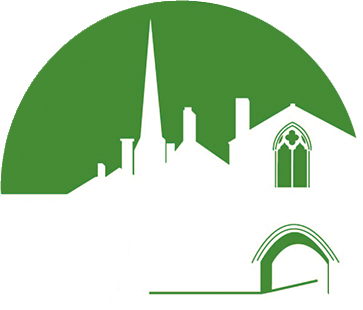Salisbury Cathedral Close Preservation Society
Supporting Excellence in Heritage Estate Management
Child in The Close
Annual Lecture – November 2011,
by Robert Key FSA
Summary
The 2011 Annual lecture of the Society was given by Robert Key who has grown up in The Close. Robert has been Member of Parliament for Salisbury for 27 years. He gave a beautifully illustrated recollection of his childhood and insightful and entertaining reminiscences of post-war life in The Close. Sadly we can only display some of his 135 slides. Robert’s lecture was followed by a lively reception.
Abridged
It was said that the Rector of St Mary’s, Portsea, Geoffrey Lunt, trained more curates who became Bishops, Deans and Archdeacons than any other priest in the Twentieth Century. In 1935 Geoffrey Lunt was himself enthroned as Bishop of Ripon. In 1946 he was translated to Salisbury. He asked my father, Maurice Key, to come as his Suffragan Bishop of Sherborne. And that is how we found ourselves in Salisbury.
It was a huge relief for my parents to leave devastated post-war Plymouth for the tranquillity of Salisbury Close. I had been born in April 1945 – an end-of-war celebration and an early baby-boomer!The Bishops had recently moved out of the old Palace, into Mompesson House. For us, Bishop Lunt negotiated the lease of the main part of the South Canonry – which we shared with the Precentor, who had an upstairs flat in the north wing.
The house was bliss It was quiet. It was safe for children (apart from the river on two sides of the garden). There was a large vegetable garden and a hen run. There was even an old pig-sty!
Even in the post-war years the old social order had changed little in Salisbury. Especially not in The Close. Once a week, the man from the International Stores on the Poultry Cross would sit himself down at the kitchen table and take the grocery order. He would also take the food coupons from the ration book! He had a small brown suitcase packed with samples and price lists. Later a delivery boy would appear on a bicycle with a huge, laden basket at the front, delivering the order.
Mr Butt the fruit and veg man had his shop in New Street. Mrs Green had the fish and poultry store in Fisherton Street. Mr Pritchett the butcher was at the Fish Row end of Butcher Row – which was open to two-way traffic!
Respect for the Law ran deep. When the Assize Judge came to Salisbury he stayed in the Judge’s Lodgings at The North Canonry. Each morning he walked to the Courts in the Guildhall, preceded by Salisbury’s Chief Police Officer and accompanied by two constables. All the traffic halted. People stood respectfully on the pavements, head bowed, as the Judge walked by.
Feeding a family is never cheap. In the 1950s food prices were very different. Today, the price per portion of protein is quite similar for middle-of-the-road items..
Most fruit and veg was seasonal apart from oranges, bananas and nasty, shiny, red Canadian apples made of blotting paper. We forget how restricted choice was.
But at least we had the market. A real livestock market every Tuesday. Cattle and sheep were penned along with all kinds of poultry.
Salisbury was a very, very smelly, well-manured place. But it was pure magic for a child from The Close.
Back to South Canonry in 1947! Living beside the river, my father had been given a beautiful Canadian canoe. This sleek craft was easily paddled against the flow of the Avon. Then Dad bought a small, clinker-built tub. She was named ‘Swift’ (which she was not) and the ‘Swift Club’ was born. In September 1949 when I was four years and eight months old, I was enrolled at Leaden Hall School (Kindergarten Department), under the watchful eye of the Headmistress, Miss Molony, and my lovely Form Mistress, Miss Drabble, who I adored. The top of the Cathedral Spire has been largely rebuilt twice in my lifetime. Twice I have seen scaffolding engulf the cross and capstone.
In 1950 the cathedral architect, Mr Forsyth, informed the Dean and Chapter that the top fifty feet of the spire were so decayed and disintegrated that it could collapse. The whole urgent repair programme would cost £70,000 (about £2.5 million today). An appeal was launched at Church House, Westminster –
In Salisbury there was a fund-raising dinner in the Guildhall. The appeal was way past the ‘urgent work’ mark by the end of 1950. It stood at £40,000 (about £1.3m today). The Friends of Salisbury Cathedral did their bit.
Imagine the excitement when, in 1950 a helicopter was used to lift off the great cross and later replace it.
From an early age, I have taken a perverse delight in spotting flaws and mistakes in the design and in the masonry. It is not malicious. Sometimes you hardly notice the ‘Oops’ factor. Sometimes it is a bit more surprising.
But the message is clear enough – clear to a child. Perfection is something you strive for, not what you are.



























